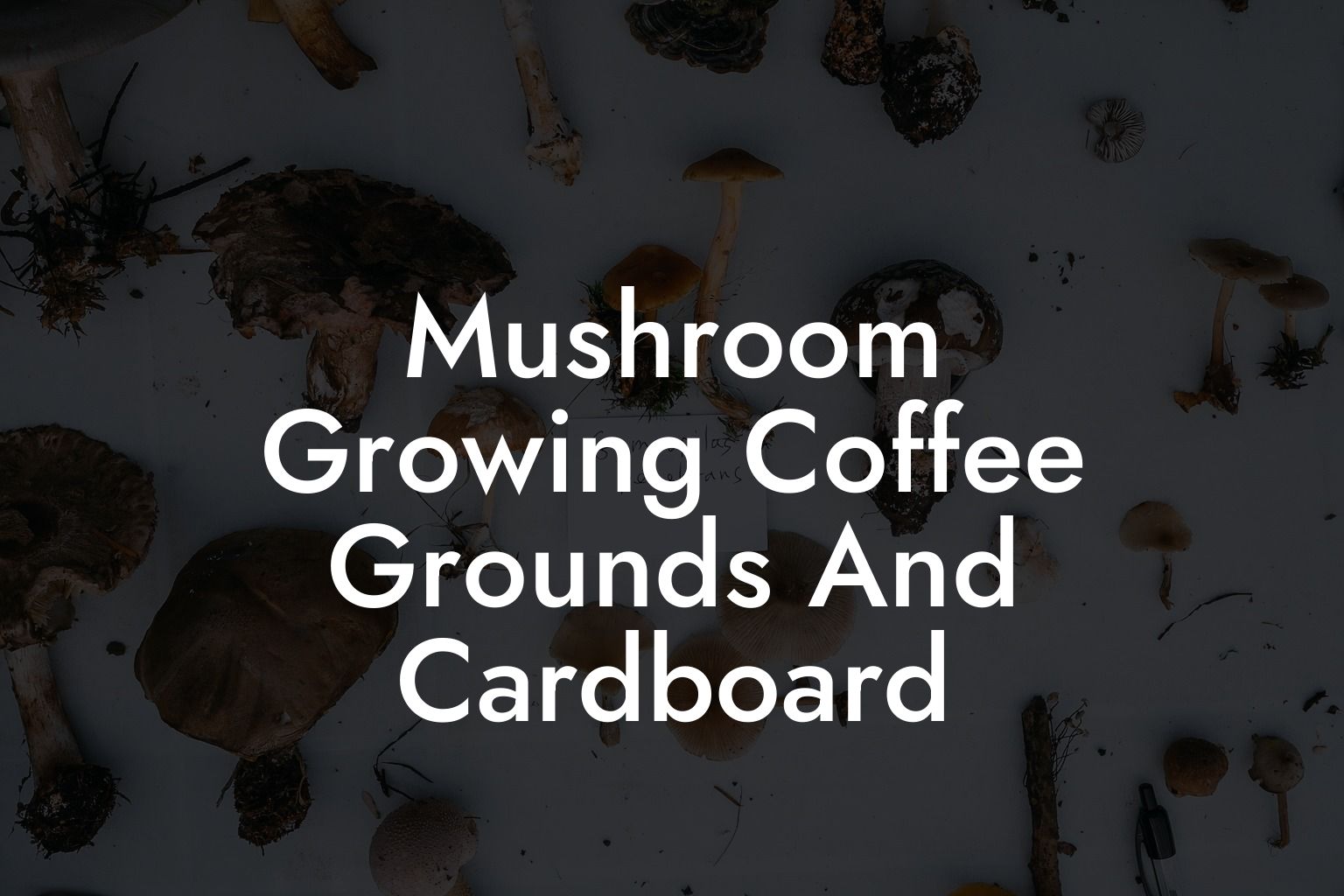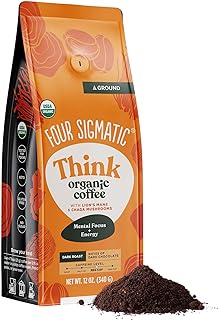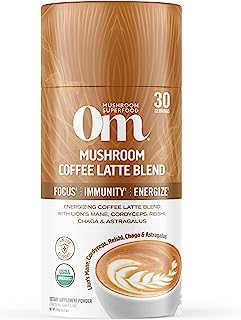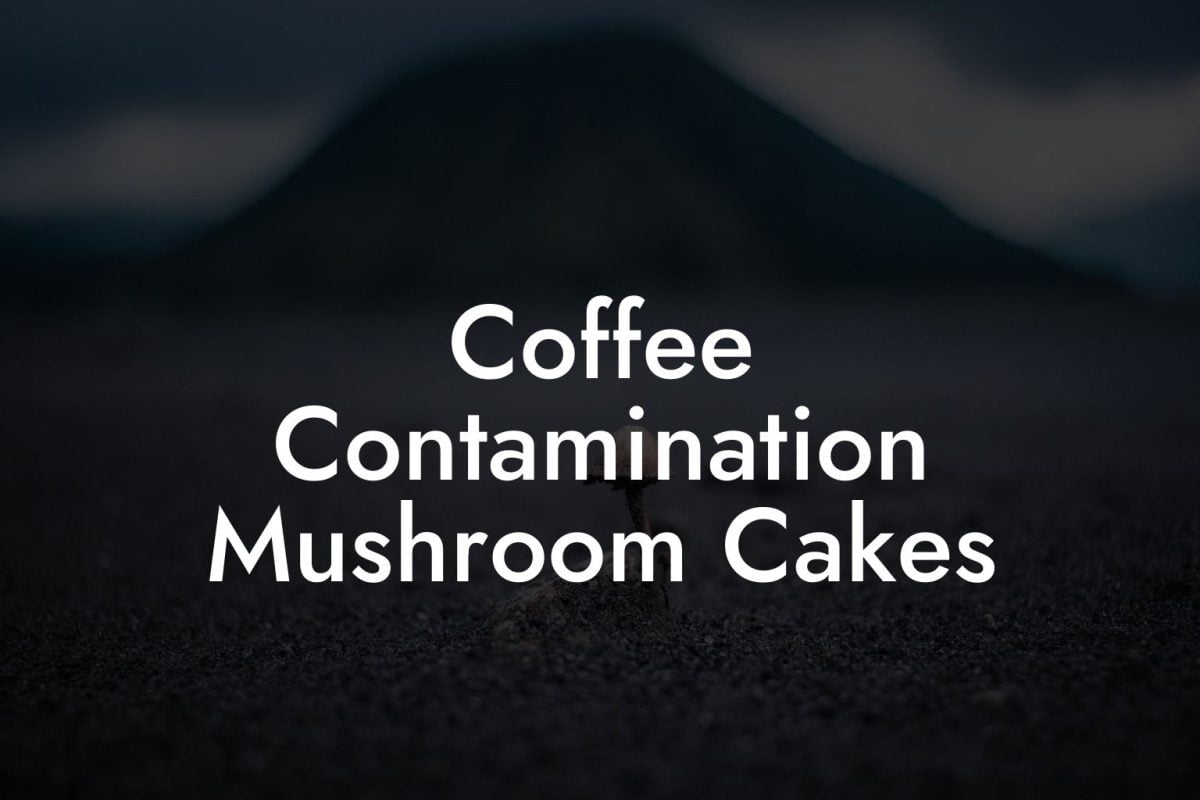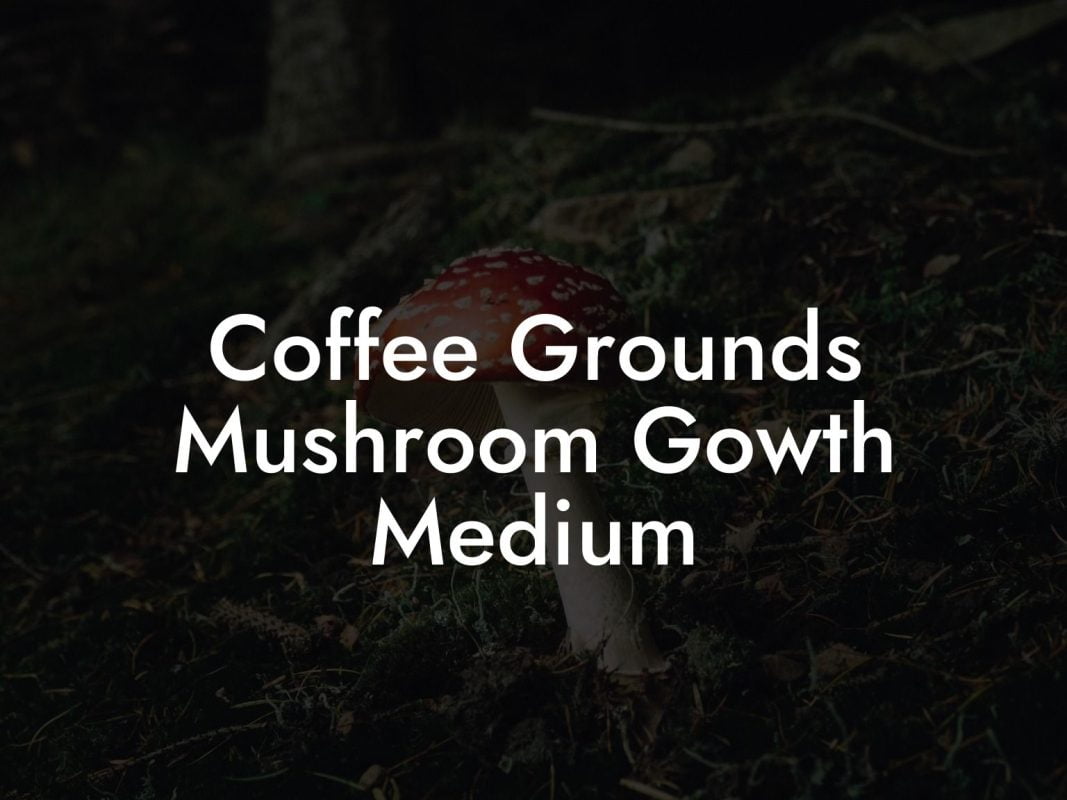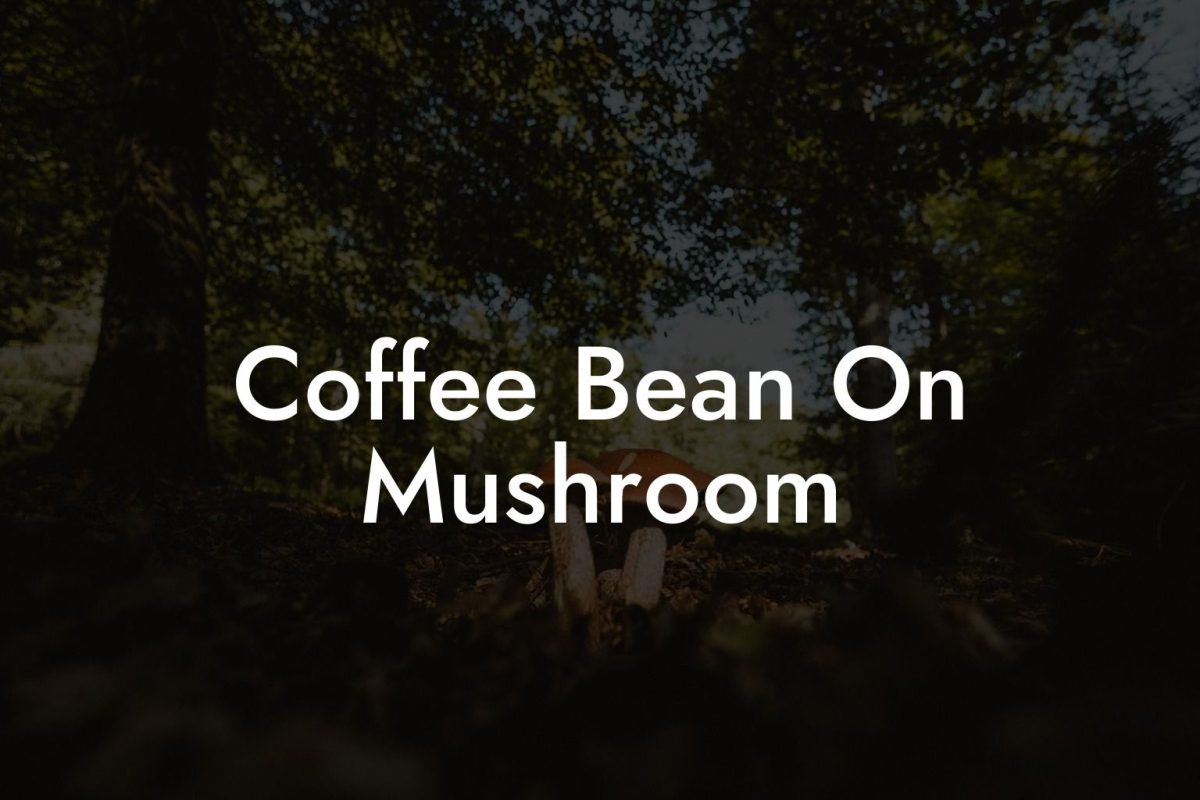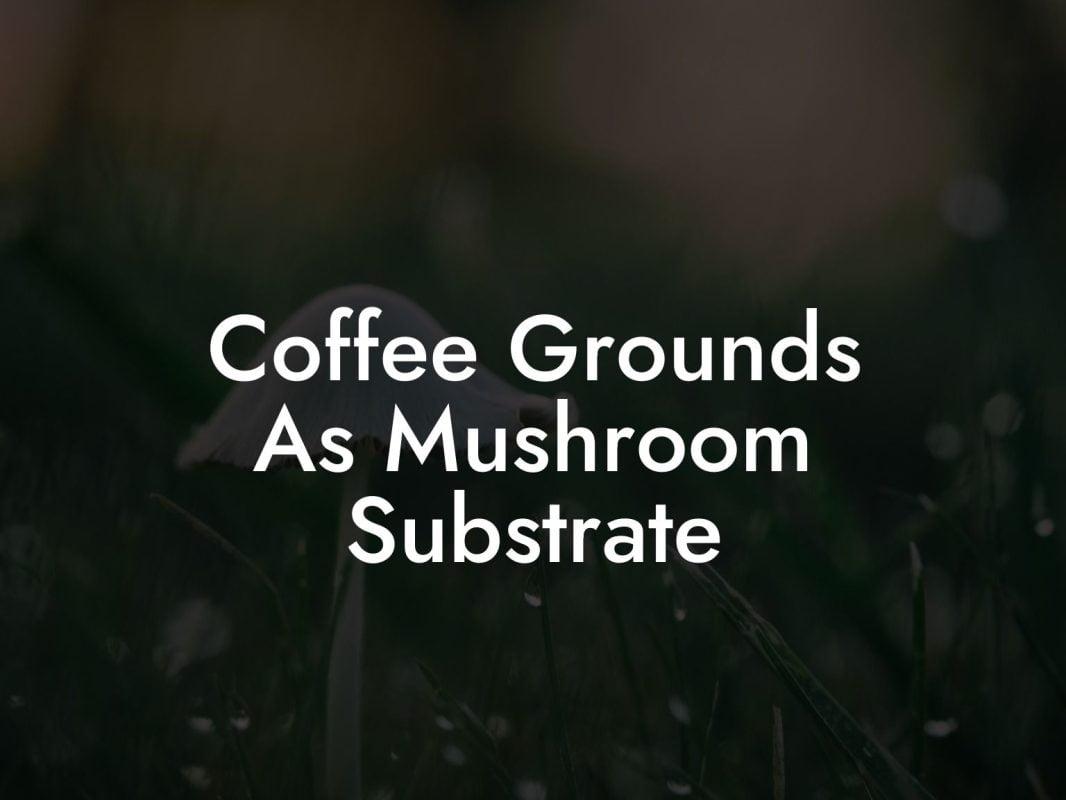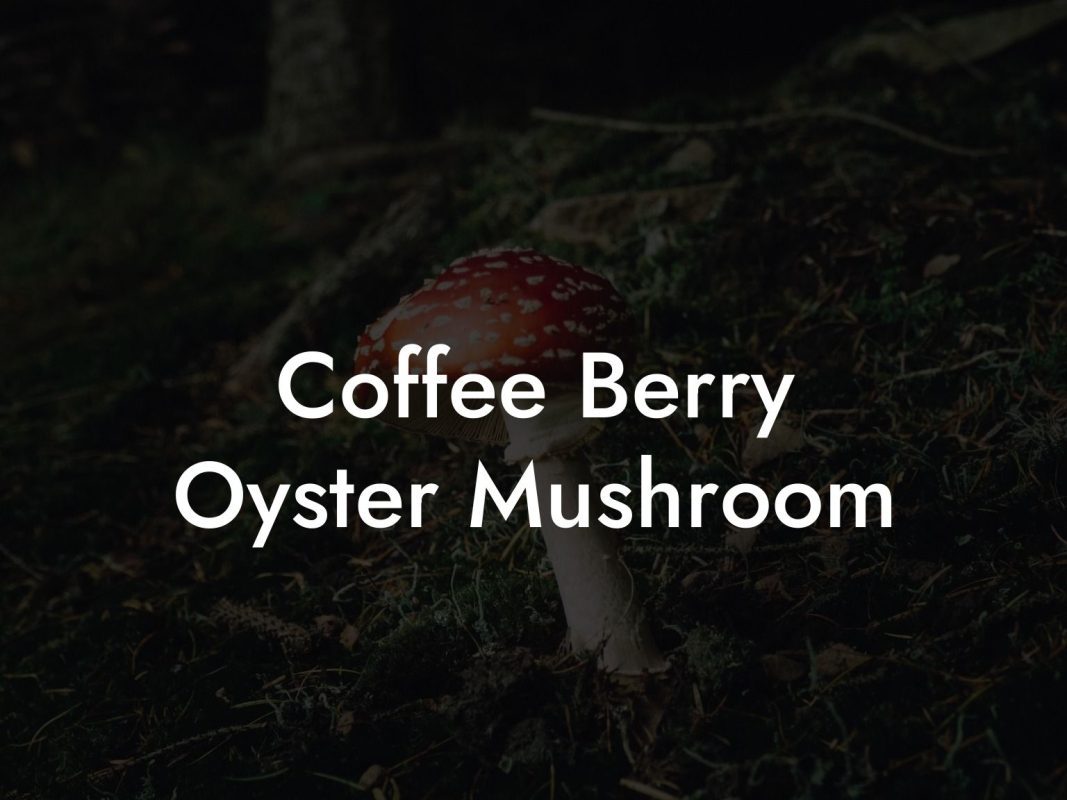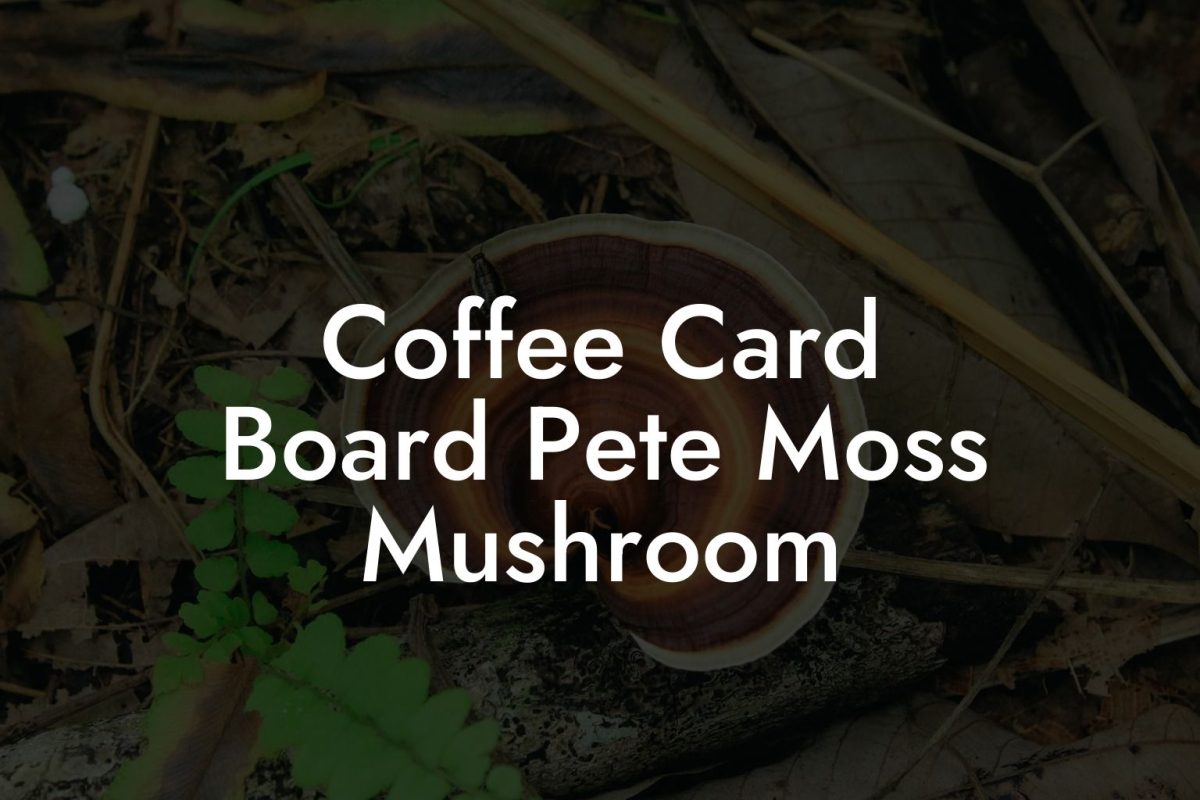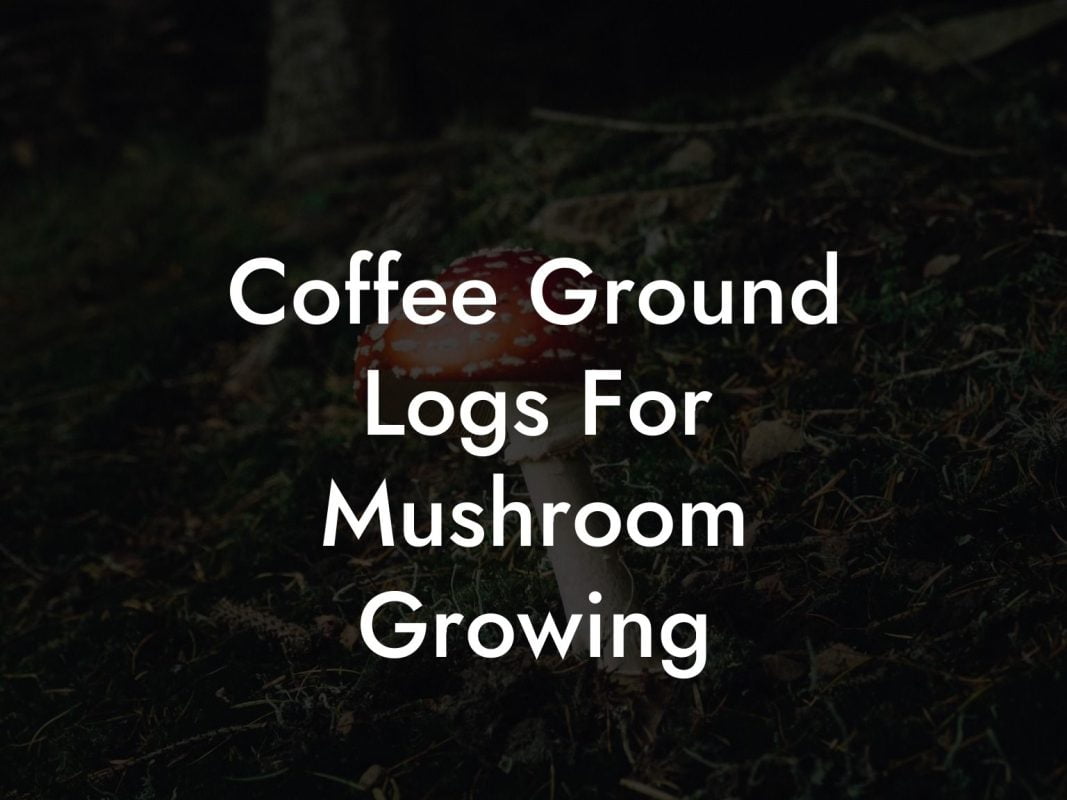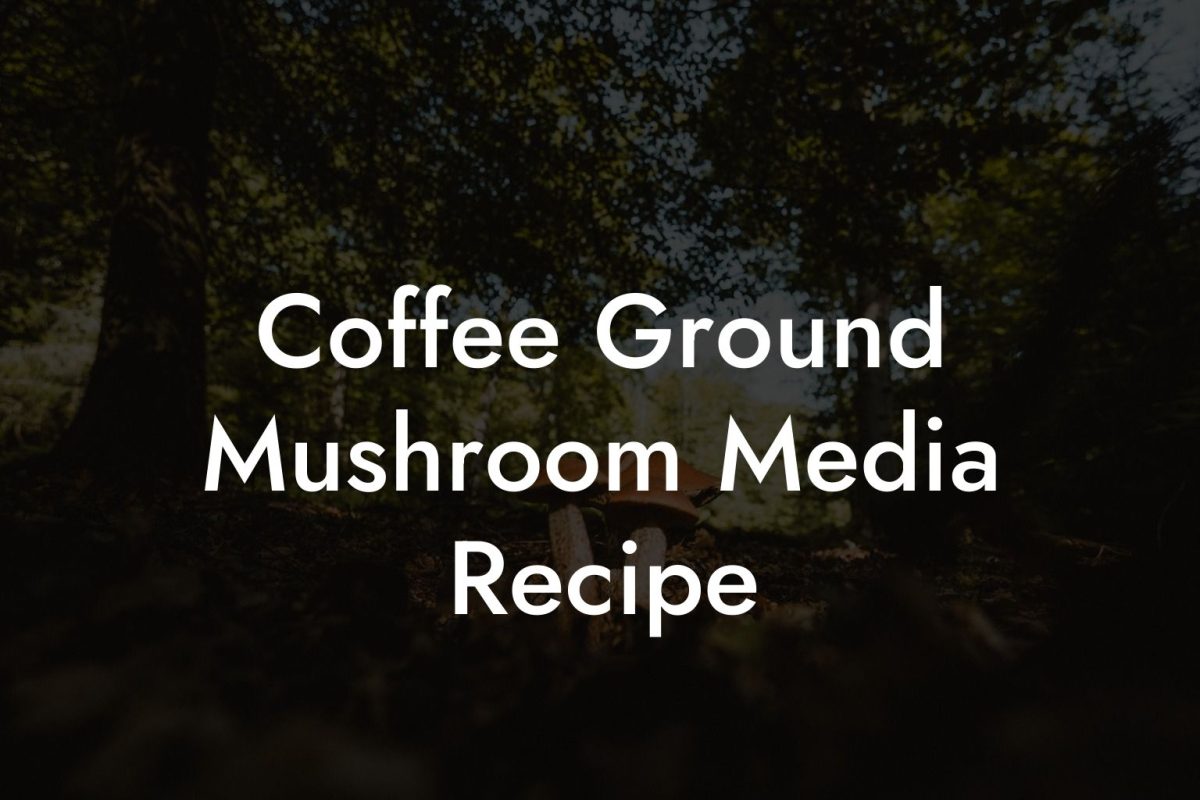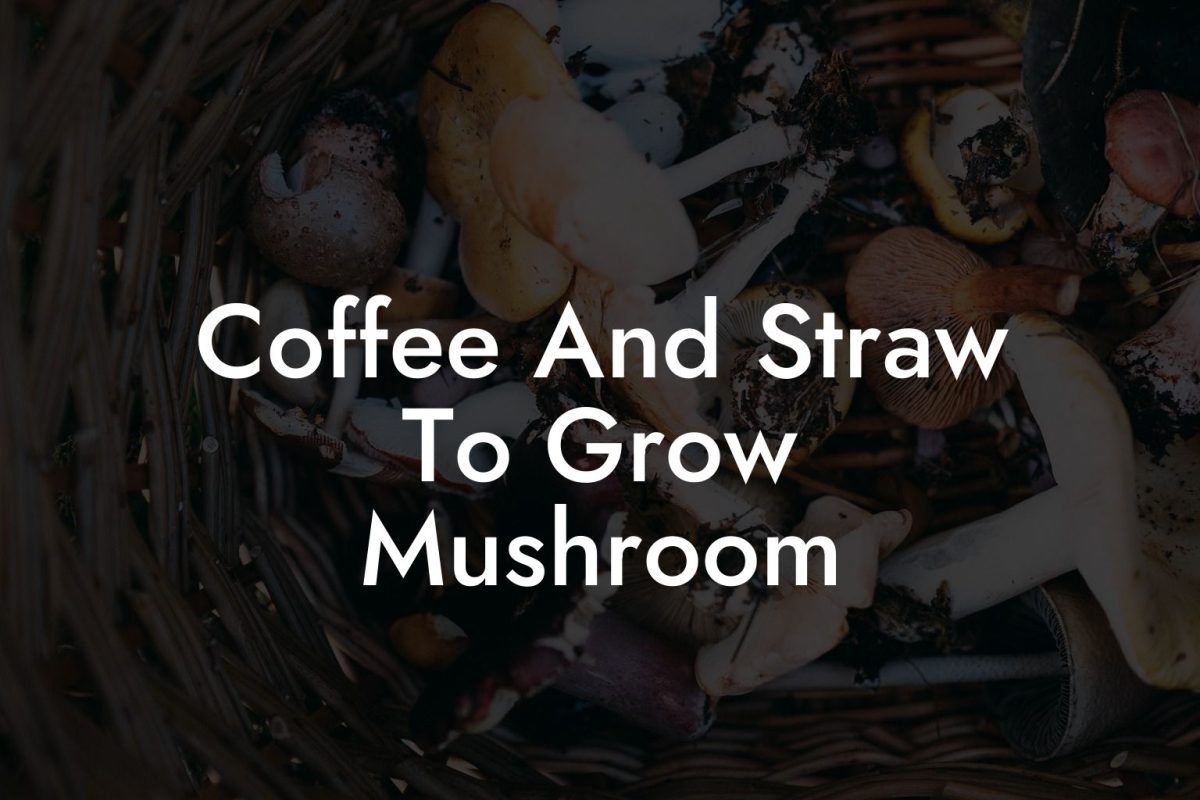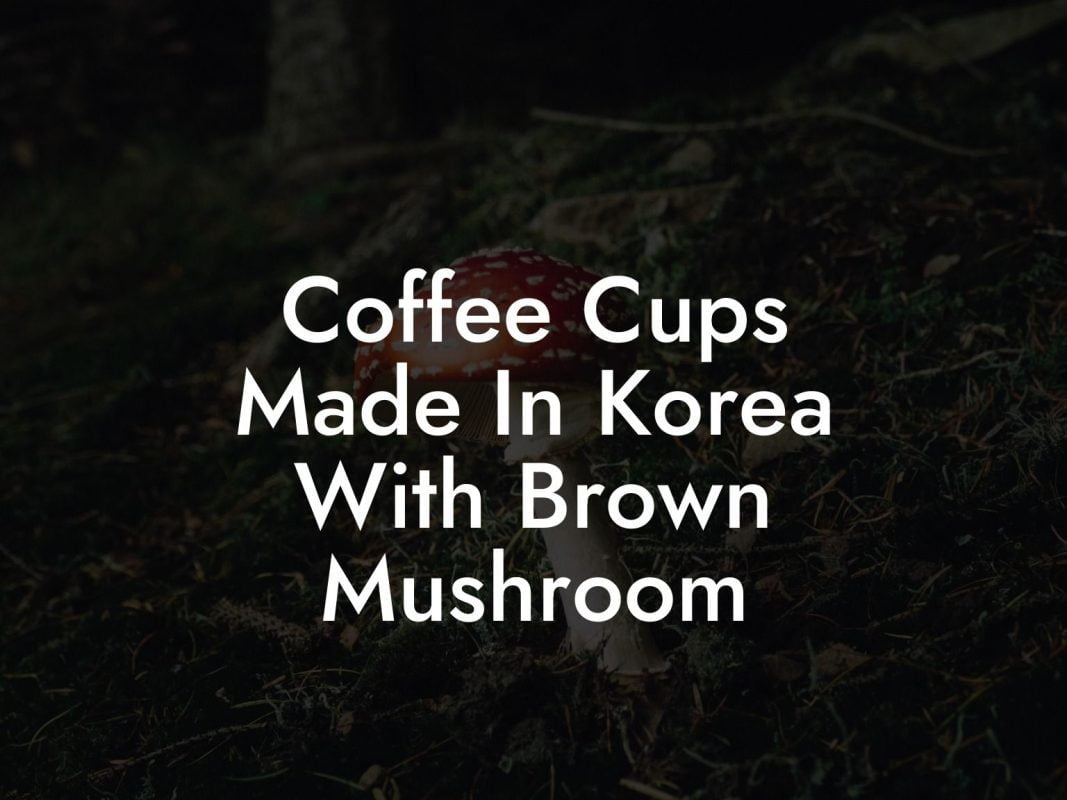Ever thought about transforming your everyday kitchen scraps into a funky, sustainable, and downright magical mushroom farm? Welcome to the wild world of mushroom growing using coffee grounds and cardboard, a DIY adventure that taps into your inner eco-warrior while providing a natural boost to your daily brew. In this guide, we’ll take you on a journey from the science behind fungal cultivation to hands-on, budget-friendly methods that are totally in tune with Gen-Z and millennial vibes. Say goodbye to wasteful habits and hello to an eco-friendly revolution powered by fungi and fueled by creativity!
Quick Links to Useful Sections
- Discovering the Fungal Frontier: A New Era in Sustainable Cultivation
- The Science of Fungi: What Makes Mushrooms So Mind-Blowing?
- Coffee Grounds & Cardboard: The Ultimate Substrate Combo
- From Waste to Woohoo: Sustainable Mushroom Growing for the Modern Eco-Warrior
- Step-By-Step Guide: How to Start Your Mushroom Growing Adventure
- Step 1: Gather Your Materials
- Step 2: Prepare the Substrate
- Step 3: Inoculation Time!
- Step 4: Create the Perfect Growing Environment
- Step 5: Patience and Observation
- Step 6: Harvesting Your Fungi
- The Buzz Around Mushroom Coffee: Fueling Your Mind and Body
- Maximizing Your Harvest: Troubleshooting and Pro Tips
- Contamination Concerns
- Low Humidity or Temperature Fluctuations
- Slow Colonization and Growth
- Harvesting Hiccups
- Mushroom Growing and Eco-Friendly Lifestyles: A Match Made in Nature
- Mushroom Coffee and Beyond: Exploring Innovative Applications
- Resources and Community Support: Your Next Steps in Fungal Entrepreneurship
- Online Communities and Forums
- YouTube Tutorials and Webinars
- Local Workshops and Urban Farming Classes
- Books and E-Guides
- Local Coffee Shops and Eco-Friendly Businesses
- Frequently Asked Questions: All You Need to Know About Mushroom Growing with Coffee Grounds and Cardboard
- Your Future in Fungal Innovation: Embrace the Journey
Discovering the Fungal Frontier: A New Era in Sustainable Cultivation
Mushrooms are far more than your salad’s garnish or the star of spooky Halloween stories. They’re nature’s recyclers, decomposers that turn organic waste into nutrient-rich soil. In recent years, the mushroom cultivation scene has exploded, especially among urban gardeners and eco-conscious DIY enthusiasts. What if we told you that you could grow gourmet mushrooms, brew energizing mushroom coffee, and help reduce waste using just coffee grounds and cardboard?
The idea might sound a bit out there, but it’s backed by solid science. Coffee grounds provide an excellent source of nutrients, while cardboard offers the perfect structure for fungal mycelium, the ‘roots’ of mushrooms, to spread. Not only do these materials work well together, but they are also easily accessible and incredibly eco-friendly. In essence, mushroom growing using coffee grounds and cardboard is about turning waste into wealth, one spore at a time.
Get ready to dive into a multi-layered exploration of everything from sustainable farming practices to the fascinating biology of mushrooms. Whether you’re a budding mycologist, an urban gardener looking to make a difference, or simply curious about the potential of mushroom coffee, this guide is your passport to a greener, groovier lifestyle.
The Science of Fungi: What Makes Mushrooms So Mind-Blowing?
Let’s take a quick detour into the microscopic world of mushrooms. At the heart of every mushroom is a network of hyphae, thread-like cells that join together to form a mycelium. This mycelial network is a powerhouse of decomposition, breaking down organic matter to release nutrients back into the ecosystem. It’s nature’s ultimate recycler and a true testament to life’s ingenuity.
Looking For The Best Mushroom Coffee? You'll Love These:
What’s cool is that mycelium is also an excellent medium for absorbing flavors, which is why mushroom coffee has become a hit among health enthusiasts. This unique beverage blends the energizing properties of coffee with the adaptogenic benefits of mushrooms like lion’s mane, reishi, and chaga. The result? A delicious drink that not only wakes you up in the morning but also supports your brain function and immune system throughout the day.
In our exploration, we’ll cover the building blocks of mushroom cultivation, emphasizing how everyday waste like used coffee grounds and discarded cardboard can set the stage for a thriving mushroom habitat. For those not ready to dive headfirst into lab-coat territory, worry not: this guide is designed to break down the science into digestible, engaging insights that empower you with knowledge and spark your DIY spirit.
Coffee Grounds & Cardboard: The Ultimate Substrate Combo
When you think about mushroom substrates, you might imagine exotic wood chips or specialized agricultural waste. But believe it or not, coffee grounds and cardboard are among the top contenders. Why? They’re packed with nutrients and have physical properties that support robust mycelial growth.
Coffee grounds are highly favored because they are rich in nitrogen, a key element that works in tandem with carbon to facilitate fungal growth. Plus, if you’re a coffee drinker, you’re already generating a steady stream of substrate material! Cardboard, on the other hand, serves as a surprisingly effective structural support. Its fibrous texture creates a maze-like network that the mycelium can colonize effectively.
In addition, using recycled materials like cardboard and used coffee grounds is a significant eco-friendly bonus. Not only do you reduce household waste, but you also minimize your ecological footprint by repurposing items that would otherwise end up in a landfill. This is sustainability in action, a win-win for both you and the planet.
From Waste to Woohoo: Sustainable Mushroom Growing for the Modern Eco-Warrior
Sustainability is more than just a buzzword, it’s a lifestyle, a commitment to making choices that are kind to the earth. For many urban gardeners and eco-conscious millennials, taking recycled materials and turning them into something valuable is both empowering and exciting. By using coffee grounds and cardboard to grow mushrooms, you’re not only recycling but also creating a mini-ecosystem right in your home.
Think about it: every time you brew a cup of coffee, you’re generating a potential mushroom substrate. Instead of tossing out the grounds, why not collect them in a designated container? Pair them with cardboard from your previous move, recycle, or packages, and you’re ready to embark on your mycological journey. The process is simple, sustainable, and a creative twist on traditional gardening.
This approach aligns perfectly with the growing movement among young people to embrace a circular economy, a system in which resources are reused, repurposed, and recycled. With mushroom growing, you can literally watch life sprout where waste once lay, evidencing a symbiotic relationship between human ingenuity and nature’s resilience.
Step-By-Step Guide: How to Start Your Mushroom Growing Adventure
Ready to get your hands (and coffee grounds) dirty? Here’s a simple, yet comprehensive step-by-step guide designed for beginners and seasoned DIY enthusiasts alike. Whether you’re looking to cultivate mushrooms for your gourmet kitchen experiments or brew your own mushroom coffee, these instructions will help you create a thriving mushroom farm at home.
Step 1: Gather Your Materials
First things first, assemble everything you need. Most of the materials for this project are readily available:
- Used Coffee Grounds: Collect fresh coffee grounds from your morning brew or local coffee shop. Aim for organic coffee if possible.
- Cardboard: Any clean, non-glossy cardboard will do, cereal boxes, shipping cartons, or even old paper towel rolls.
- Mushroom Spores/Spawn: These can be purchased online or at local gardening stores. Choose a species that thrives on high-nitrogen substrates and is well-suited to home growing, such as oyster mushrooms.
- Containers: Plastic bags, buckets, or even repurposed bins work well as growing chambers.
- Additional Tools: A water spray bottle, a pair of gloves, and a small brush for cleaning.
The best part? Most of these items are either recycled or very inexpensive, keeping your project green both in practice and in cost.
Step 2: Prepare the Substrate
The substrate is the foundation of your mushroom farm. Mix your used coffee grounds with shredded cardboard at roughly a 1:1 ratio. If you find that the mixture is too dry, add a little water until it achieves a moist, crumbly texture. Be careful, the substrate should be damp like a wrung-out sponge, not overly wet.
In some cases, you might need to pasteurize the mixture to eliminate unwanted microbes. This can be done by lightly heating the substrate in an oven at about 160°F (71°C) for 30 minutes. Allow the substrate to cool completely before proceeding to the next step.
Step 3: Inoculation Time!
Once your substrate is ready, introduce the mushroom spawn. Mix it thoroughly into the substrate in a clean environment, this helps prevent contamination. The goal is to distribute the spawn evenly throughout the material so that the mycelium can colonize the entire substrate.
Transfer the mixture into your chosen container. Lightly pack it down without compressing it too much, as a loose structure supports better air circulation, a critical component for healthy mycelial growth.
Step 4: Create the Perfect Growing Environment
Mushrooms thrive in a humid, dark environment with controlled temperatures. Place your container in a quiet corner of your home, such as a basement, closet, or even a repurposed cupboard. To maintain high humidity, lightly mist the substrate with water every few days, or consider covering the container with a plastic bag that has small ventilation holes.
Ideal temperature ranges between 55°F and 75°F (13°C to 24°C), although certain species may have slightly different requirements. Monitor the environment using a simple hygrometer and thermometer to keep track of your growing conditions.
Step 5: Patience and Observation
Now, the waiting game begins! Over the next few weeks, you’ll notice the mycelium gradually spread throughout the substrate. Initially, you might see white, thread-like structures emerging, this is the confirmation that your inoculation was successful. As time goes by, small pinheads (baby mushrooms) will form, and soon, a lush fungal network will be evident.
Remember: every mushroom project is unique. Factors like ambient light, humidity, and temperature can affect the speed of growth. Stay engaged by keeping a growth journal, tracking milestones, and don’t hesitate to tweak your setup if you spot potential issues.
Step 6: Harvesting Your Fungi
Once your mushrooms have fully matured, usually indicated by an open cap and a firm texture, it’s time to harvest! Use a sharp knife or gently twist them off at the base. Fresh mushrooms are best used immediately, though you can store them in the refrigerator for a few days.
For those experimenting with mushroom coffee, some species can be dried and ground to mix with your regular coffee, creating that signature adaptogenic beverage that’s all the rage among biohackers and health enthusiasts.
Congratulations! You’ve just turned recycled coffee grounds and cardboard into a thriving mini-farm of mushrooms. Not only have you embraced a sustainable lifestyle, but you’ve also tapped into a creative, hands-on way to support your health and the environment.
The Buzz Around Mushroom Coffee: Fueling Your Mind and Body
In the realm of wellness trends, mushroom coffee is swiftly replacing conventional coffee in many hip cafes and online shops. But what’s all the fuss about? Besides its earthy flavor and smooth aftertaste, mushroom coffee combines the best of both worlds: the jolt of caffeine with the adaptogenic power of mushrooms.
Adaptogens like lion’s mane, reishi, and chaga don’t just help you stay alert, they also support cognitive function, reduce stress, and bolster your immune system. For Gen-Z and millennials seeking a balanced lifestyle without the jitters and crash from traditional espresso shots, mushroom coffee offers a holistic alternative that’s both trendy and beneficial.
Integrating your own home-grown mushrooms into your brew can be a empowering act of self-care. Imagine taking a sip of your morning coffee and knowing that it’s not just a ritual for energy, but a conscious moment where sustainability, health, and innovation blend together. Plus, every cup reinforces the idea that your values matter, supporting eco-friendly practices while fueling your day.
Whether you choose to brew your mushrooms directly or infuse extracts into your favorite latte recipe, the possibilities are endless. Embrace the spirit of experimentation, and let your taste buds, and your brain, thank you for making the switch.
Maximizing Your Harvest: Troubleshooting and Pro Tips
Even the most enthusiastic mushroom cultivators hit a few bumps along the way. Don’t worry, growing mushrooms is as much an art as it is a science. Here are some common issues and quick fixes to keep your fungi thriving:
Contamination Concerns
Sometimes, unwanted molds and bacteria can sneak into your substrate, especially if conditions are too wet or unsterile. To minimize these risks, always start with clean, pasteurized materials. If you notice discolored patches or fuzzy growth that isn’t white, it might be contamination. In such cases, promptly remove the affected area.
Maintaining proper hygiene throughout the process and ensuring good ventilation in your growing space will go a long way in keeping your fungi safe and healthy.
Low Humidity or Temperature Fluctuations
Mushrooms thrive in a stable, humid environment. If you notice that your mycelium is drying out or that mushrooms are stunted in their growth, check your environmental conditions. Use a hygrometer to monitor moisture levels and a thermometer to track temperature. A small humidifier or a DIY misting system can help maintain consistent humidity during dry spells.
Consider creating a simple humidity tent using a plastic cover with ventilation holes, which can protect your substrate from sudden temperature changes while allowing for necessary airflow.
Slow Colonization and Growth
Patience is key when it comes to fungus farming. If your mycelium seems slow to colonize, it might be that the substrate is too compact or lacking in nutrients. Gently fluff the substrate to improve airflow, and ensure that you’re using a balanced mix of coffee grounds and cardboard. Sometimes, it may simply be a matter of adjusting your setup to better mimic the mushroom’s natural habitat.
Harvesting Hiccups
Timing is crucial for a quality harvest. Pulling mushrooms too soon may result in underdeveloped, flavorless fungi, while waiting too long might lead to overripe, spore-laden clusters that can affect the taste. Keep a close eye on the development stages and harvest when the caps are fully open but before they begin to flatten out excessively.
Trust your instincts, each mushroom batch is a learning experience, and even the hiccups can offer insights for your next cultivation cycle.
With a little troubleshooting know-how, you’ll be well-equipped to handle any setbacks, ensuring that your home-grown fungi continue to flourish season after season.
Mushroom Growing and Eco-Friendly Lifestyles: A Match Made in Nature
Beyond the science and the DIY mechanics, mushroom growing using coffee grounds and cardboard embodies a larger lifestyle choice, a dedication to sustainability, creativity, and community. For many urban dwellers and young professionals, integrating these practices into daily life represents a fresh approach to environmental stewardship.
By repurposing everyday waste, you not only contribute to reducing landfill overload but also support the circular economy. This is all about rethinking what “waste” means and viewing every discarded item as an opportunity. Turning coffee grounds and cardboard into a home mushroom farm is a potent reminder that small, everyday actions can lead to extraordinary environmental progress.
Moreover, this movement has inspired a vibrant community of DIY enthusiasts, social media influencers, and sustainability advocates who are eager to share their experiments, successes, and even failures. From online forums to local workshops, there’s a thriving network eager to support and inspire your fungal journey. Engage with fellow mycophiles and turn your mushroom-growing practice into a collaborative effort that elevates both your lifestyle and your eco-cred.
Consider documenting your projects on social media, with time-lapse videos of mycelial colonization, behind-the-scenes looks at your harvesting process, and creative recipes for mushroom coffee. Not only will you inspire others to embrace sustainable practices, but you’ll also join a community that values innovation, resourcefulness, and a deep respect for nature.
Mushroom Coffee and Beyond: Exploring Innovative Applications
Once you’ve mastered the basics of mushroom growing with coffee grounds and cardboard, the possibilities expand far beyond the kitchen. Mushroom coffee is just the beginning, these fungi have potential applications that span health, nutrition, fashion, and even architecture (yes, you read that right!).
In the health and wellness space, researchers are exploring how mushrooms can improve mental clarity, boost immunity, and even help with stress management. With adaptogenic properties found in species like lion’s mane and reishi, there’s a growing body of evidence supporting their role in enhancing brain function and overall vitality.
What’s more, the fermentation and brewing processes involved in turning mushrooms into coffee can be as artistic as they are functional. Home brewers are experimenting with flavor profiles, blending robust coffee beans with subtle mushroom notes to create beverages that are not only energizing but also rich in antioxidants and essential nutrients.
And if you’re the creative type, think about using spent mushroom substrate as a soil amendment for urban gardening. The nutrient-dense compost generated after harvesting mushrooms is perfect for growing herbs, vegetables, or even decorative plants. In this way, you can build a closed-loop system where nothing goes to waste, a true hallmark of sustainable living.
This multifaceted potential makes mushroom growing a fascinating intersection of science, art, and environmental responsibility. It’s about challenging the status quo and exploring new ways to innovate using the natural resources right at your fingertips.
Resources and Community Support: Your Next Steps in Fungal Entrepreneurship
Ready to take your mushroom growing game to the next level? Here are some resources and community touchpoints to help you cultivate your skills and expand your knowledge:
Online Communities and Forums
Join online spaces like Reddit’s r/mycology, Facebook groups dedicated to mushroom cultivation, or specialized forums where enthusiasts share their experiments and troubleshoot challenges. These communities are a treasure trove of practical tips, inspiring success stories, and even humorous mishaps that remind you that every mycological journey is unique.
YouTube Tutorials and Webinars
Visual learners will appreciate a wealth of video content available online. From detailed walkthroughs of the inoculation process to time-lapse videos of mycelial growth and harvesting tips, these resources offer step-by-step guidance that’s easy to follow. Look for channels hosted by experienced mycologists who blend technical expertise with an engaging personality.
Local Workshops and Urban Farming Classes
Check out local community boards, urban farming centers, and botanical gardens for workshops on mushroom cultivation and sustainable gardening. These classes often provide hands-on experience and the opportunity to network with like-minded individuals in your area.
Books and E-Guides
For a deeper dive into the science and history of fungi, explore books and e-guides on mycology. Whether you’re interested in the medicinal properties of mushrooms or the art of DIY cultivation, literature is a valuable resource for expanding your knowledge and fueling your passion.
Local Coffee Shops and Eco-Friendly Businesses
Many local coffee shops are eager to participate in sustainability initiatives. Strike up a conversation about donating used coffee grounds or see if they’re interested in co-hosting a mushroom-growing workshop. Small businesses often appreciate creative, eco-friendly collaborations that align with their brand values.
Remember, your mushroom-growing journey doesn’t have to be a solo venture. Build a community around your projects, share your insights online, and collaborate with local resources to turn your passion into a thriving venture. Whether you’re dreaming of starting a small urban farm or simply want to incorporate more sustainable practices into your daily routine, the support network out there is robust and waiting for you to join in.
As you explore these resources and connect with others, you’ll discover that mushroom growing is not just about cultivating fungi, it’s about cultivating a lifestyle that celebrates creativity, resourcefulness, and a deep respect for the natural world.
Frequently Asked Questions: All You Need to Know About Mushroom Growing with Coffee Grounds and Cardboard
We know you might have a few questions buzzing in your mind about this eco-friendly, DIY mushroom-growing adventure. Here are some of the most common queries answered to help guide your journey:
1. What makes coffee grounds and cardboard effective as a mushroom substrate?
Coffee grounds are rich in nitrogen, which, when paired with the carbon-rich fibers of cardboard, creates a balanced substrate ideal for fungal growth. This mixture provides the necessary nutrients and structure for mycelium to flourish.
2. How do I ensure a contamination-free environment for my mushroom farm?
Maintaining cleanliness is key. Pasteurize your substrate, use sanitized tools, and work in a clean area when inoculating with mushroom spawn. Proper ventilation and controlled humidity further reduce the risk of contamination.
3. How long does it take for mushrooms to grow using this method?
Typically, you can expect the mycelium to colonize your substrate within 2-3 weeks under ideal conditions. Once colonization is complete, pinheads (baby mushrooms) often start forming within another week or so. Harvest time can vary based on the mushroom species.
4. Can I experiment with different types of mushrooms using coffee grounds and cardboard?
Absolutely! While oyster mushrooms are one of the most popular choices for this substrate, many species that prefer nitrogen-rich mediums can thrive as well. Always check the specific requirements for the type of mushroom you intend to grow.
5. How do I prepare the substrate without it getting too wet or dry?
The key is to achieve a damp, crumbly texture similar to a wrung-out sponge. If it’s too wet, the risk of contamination increases. If it’s too dry, the mycelium will struggle to colonize. Regular misting and monitoring environmental conditions can help maintain the right moisture levels.
6. Can I use this method to grow mushrooms for mushroom coffee?
Yes, many of the mushrooms grown using this method can be dried and ground to create a nutrient-packed addition to your coffee. Mushroom coffee combines the energizing effects of caffeine with the adaptogenic benefits of mushrooms.
7. Do I need any special equipment to start?
Most of the required materials are common household items or easily sourced online. All you need is used coffee grounds, cardboard, mushroom spawn, and some basic tools like a container and a spray bottle.
8. How do I know if my mushrooms are ready for harvest?
Harvest when the mushrooms have fully matured, usually indicated by open caps and a firm texture, before they start releasing too many spores. Each mushroom variety might have slightly different signs, so keep notes on your observations.
9. What should I do with the spent substrate after harvest?
The spent substrate is nutrient-rich compost. It can be added to your garden soil or used as a natural fertilizer for other plants, completing your sustainable cycle.
10. Where can I find more community support and information?
Look for online forums, local urban farming workshops, and social media groups focused on mushroom cultivation. There’s a vibrant community out there ready to share tips, troubleshoot issues, and celebrate every mushroom milestone with you.
Your Future in Fungal Innovation: Embrace the Journey
Embracing the world of mushroom growing with coffee grounds and cardboard isn’t just about cultivating fungi, it’s a lifestyle shift towards sustainability, innovation, and creative empowerment. By repurposing waste, tapping into natural cycles, and engaging with a vibrant community, you’re joining a movement that redefines how we interact with the environment.
Every step you take, from gathering those humble coffee grounds to watching white mycelium burst forth, adds up to a powerful narrative of resourcefulness and hope. It’s a reminder that nature, when nurtured with a bit of creativity, can transform what we discard into thriving, life-affirming art. Your journey is a testament to the fact that sustainable living is accessible, fun, and deeply rewarding.
As you sip on your next cup of mushroom coffee, remember that you’re part of a community that values ingenuity, draws inspiration from natural processes, and relentlessly pursues ways to make the world a greener, better place. Your venture into the fungal frontier is more than just a hobby, it’s a bold statement of environmental responsibility and creative exploration.
Now’s the time to celebrate every little win, from the first successful colonization to that triumphant harvest. Embrace the ever-evolving process of learning, adapting, and growing alongside your mushrooms. The tools, resources, and community support are at your fingertips, and your future in fungal innovation is sparkling with potential.
So, gear up for a journey that’s as rewarding as it is unconventional. Let your kitchen become a laboratory, your discarded coffee grounds a treasure trove, and your recycled cardboard the foundation of an eco-friendly revolution. The magic of mushrooms awaits, nurture it, celebrate it, and share your success with the world!
Looking For The Best Mushroom Coffee? You'll Love These:
Useful Interruption: Dive deeper into the world of Mushroom Coffee with our most popular sections. If there is anything you think is missing or anything you would love for us to write about, just give us a shout.
- Mushroom Coffee Equipment & Product Reviews
- Mushroom Coffee Recipes & Creative Variations
- Mushroom Coffee Guides & Troubleshooting
- Mushroom Coffee Brewing & Preparation Techniques
- Model Rocket Advanced Rocketry & Innovations
- Mushroom Coffee Fundamentals
- Model Rocket Equipment Reviews & Digital Tools
- Mushroom Coffee Health Benefits & Wellness
- Mushroom Coffee Mycology & Scientific Insights
- Mushroom Coffee Community, Lifestyle & Engagement
I tried mushroom coffee this morning and told my friend, "This brew is spore-tacular!" He shot back, "Guess that's why it's such a cap-tivating way to kickstart your day!"

